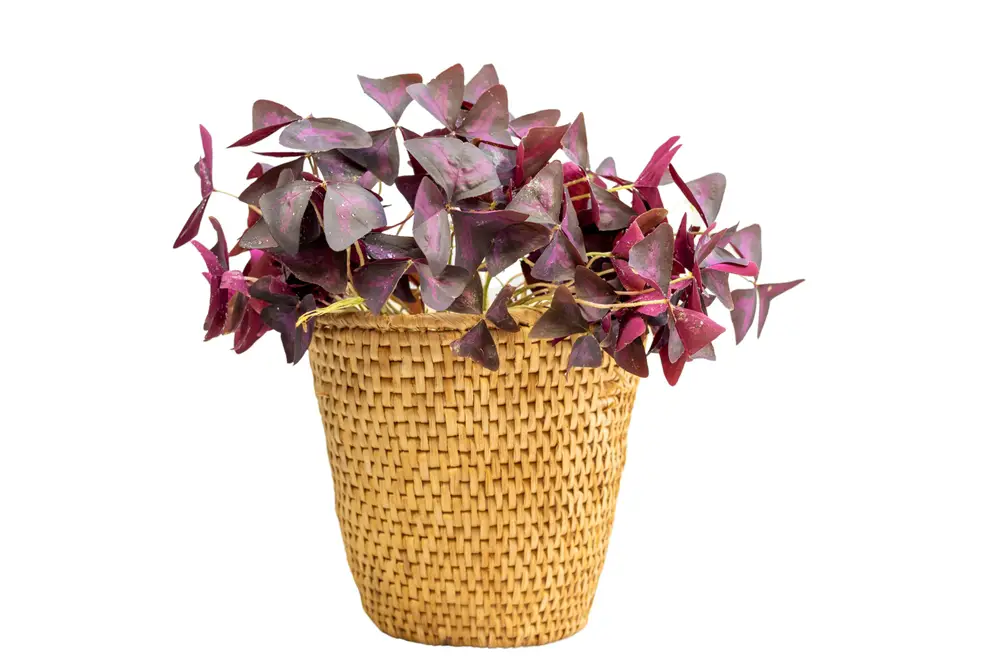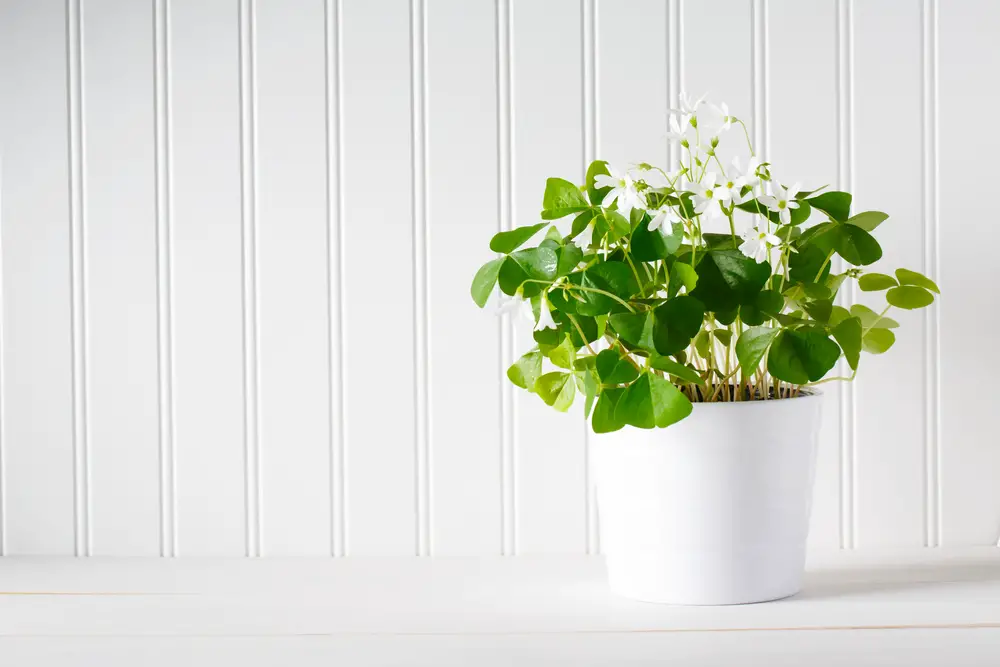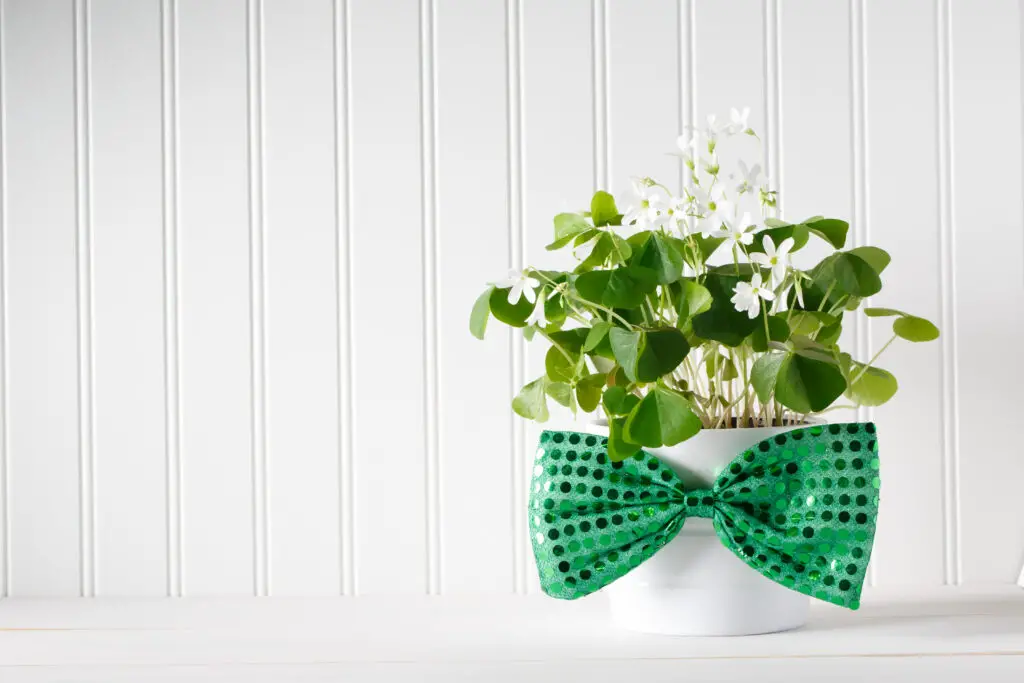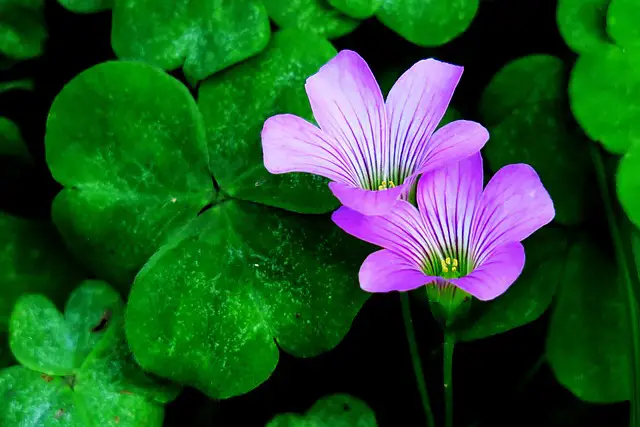Shamrock plants are a popular choice for indoor gardeners, but these plants are not without their issues. One common problem is the appearance of white spots on the leaves. These spots can indicate a variety of issues, from fungal diseases to pests, and can impact the overall health of the plant.
Identifying the cause of white spots on shamrock plant leaves is crucial for effective treatment and prevention. Some common causes of white spots include fungal diseases like powdery mildew and rust, as well as pests like spider mites and mealybugs.
Diagnosing the problem can involve careful examination of the plant, including the leaves, stems, and soil.
Treatment and prevention of white spots on shamrock plants can vary depending on the cause of the problem. Some remedies include removing affected leaves, adjusting watering and lighting conditions, and applying fungicides or insecticides.
However, prevention is often the best course of action, with measures like proper plant care and regular inspection helping to prevent issues before they arise.
Key Takeaways On White Spots on Shamrock Plants Leaves
- White spots on shamrock plants can indicate a variety of issues, from fungal diseases to pests.
- Identifying the cause of white spots is crucial for effective treatment and prevention, and can involve careful examination of the plant.
- Treatment and prevention of white spots can vary depending on the cause, with proper plant care and regular inspection helping to prevent issues before they arise.
See other reasons why your houseplants might be having white spots:
Shamrock plants, also known as oxalis, are a popular houseplant due to their attractive foliage and ease of care. These plants are part of the Oxalidaceae family and are native to South America, Africa, and Central America. They are named after their three-lobed leaves, which are said to represent the Holy Trinity in Christian lore.
Species

There are over 500 species of oxalis, and they vary in size, shape, and color. The most common types of shamrock plants are the Oxalis triangularis and the Oxalis regnellii.
The Oxalis triangularis has purple leaves that fold up at night, while the Oxalis regnellii has green leaves with purple markings. Both species produce delicate, white, or pink flowers that bloom in the spring.
Varieties
Shamrock plants come in a variety of colors and patterns. The most popular varieties include the Iron Cross, which has green leaves with a dark purple cross in the center, and the Francis, which has green leaves with a white border.
Other popular varieties include the Purple Shamrock, which has deep purple leaves, and the Green Shamrock, which has green leaves with white spots.
Symptoms of White Spots
Shamrock plants are known for their beautiful three-leaf clovers, but when white spots appear on the leaves, it can be a cause for concern. In this section, we will discuss the symptoms of white spots on shamrock plants and what they indicate.
Spot Characteristics
White spots on shamrock plant leaves can take on different appearances. They can be powdery, fuzzy, or raised bumps. Powdery white spots are often a sign of powdery mildew, a fungal disease that thrives in warm, humid conditions.
Fuzzy white spots, on the other hand, can be a sign of a fungal disease called white mold. Raised bumps or pustules can be a sign of an insect infestation, such as scale insects.
Affected Plant Parts
White spots can appear on different parts of the shamrock plant, including the leaves, veins, and stems. When white spots appear on the leaves, they can cause discoloration and eventually turn brown.
White spots that appear on the veins can cause them to become discolored or even die. In severe cases, white spots on the stems can cause the plant to wilt or die.
It is important to note that white spots on shamrock plants can be a sign of various issues, including fungal diseases, insect infestations, or even improper care. It is important to identify the cause of the white spots and take appropriate action to address the issue.
Shamrock Plant – 3 Common Problems

Shamrock plants are known for their beautiful foliage, but sometimes the leaves can develop white spots. These spots can be caused by a variety of factors, including fungal infections, pest infestations, and environmental factors.
1. Fungal Infections
One of the most common causes of white spots on shamrock plant leaves is fungal infections. Powdery mildew is a common fungal infection that can cause white spots to appear on the leaves.
This fungus thrives in humid conditions and can spread quickly if left untreated. Fungi can also produce spores that can spread to other plants, so it’s important to treat the infection as soon as possible.
2. Pest Infestations
Pest infestations can also cause white spots to appear on shamrock plant leaves. Mealybugs, spider mites, and whiteflies are common pests that can feed on the leaves of the plant, causing damage and discoloration.
These pests can also spread to other plants, so it’s important to identify and treat the infestation as soon as possible.
3. Environmental Factors
Environmental factors such as humidity, wind, water, and wet conditions can also cause white spots to appear on shamrock plant leaves. High humidity can create the perfect conditions for fungal infections to thrive, while strong winds can damage the leaves and create small white spots.
Overwatering the plant can also cause the leaves to become waterlogged, leading to the development of white spots.
Diagnosing the Problem

Shamrock plants are known for their delicate and intricate foliage, which can be easily affected by white spots. If you notice white spots on your shamrock plant’s leaves, it is important to diagnose the problem as soon as possible to prevent further damage.
Using a Magnifying Glass
One way to diagnose the problem is by using a magnifying glass to examine the leaves closely. Look for any signs of pests or insects, such as spider mites or mealybugs, which can cause white spots on the leaves. If you find any pests, use an insecticidal soap or neem oil to get rid of them.
Checking the Soil and Pot
Another possible cause of white spots on shamrock leaves is soil and pot issues. Check the soil moisture level, as overwatering or underwatering can cause white spots on the leaves. Ensure that the soil is well-draining, as soil that retains too much moisture can cause root rot and other diseases.
Check the pot size as well, as a pot that is too small can cause stress on the plant, leading to white spots on the leaves. If the pot is too small, repot the plant into a larger pot with fresh soil.
Panic
It is important not to panic when you notice white spots on your shamrock plant’s leaves. While it can be concerning, there are many possible causes of white spots on shamrock leaves, and most of them are treatable.
With a little bit of investigation and care, you can diagnose and treat the problem, and your shamrock plant will continue to thrive.
Treatment and Prevention
Shamrock plants are susceptible to white spots on their leaves caused by fungal infections such as powdery mildew and rust. Fortunately, there are several effective treatment and prevention methods available to help keep your shamrock plant healthy and thriving.
Choosing the Right Fungicide
When it comes to treating white spots on shamrock leaves, choosing the right fungicide is crucial. Look for a fungicide that is specifically formulated to treat powdery mildew or rust, depending on the type of fungal infection your plant is experiencing.
Follow the instructions on the product label carefully, and be sure to apply the fungicide to both the tops and bottoms of the leaves.
Proper Watering and Fertilizing

Proper watering and fertilizing are also important factors in preventing white spots on shamrock leaves. Overwatering can create a humid environment that encourages fungal growth, while underwatering can stress the plant and make it more susceptible to infection.
Water your shamrock plant only when the top inch of soil feels dry to the touch. Fertilize your plant regularly with a balanced fertilizer to keep it healthy and strong.
Pruning and Maintenance
Regular pruning and maintenance can also help prevent white spots on shamrock leaves. Remove any infected leaves as soon as you notice them, and dispose of them in the trash to prevent the fungus from spreading. Keep your plant in a well-ventilated area with good air circulation to help prevent fungal growth.
Potential Impact on Shamrock Plant’s Health
Impact on Leaves and Stem
White spots on the leaves of a shamrock plant can be indicative of a fungal disease such as powdery mildew or rust, or other issues such as spider mites. If left untreated, these diseases can spread and impact the overall health of the plant.
Powdery mildew can cause the leaves to turn yellow and brown, while rust can cause the leaves to develop orange or brown spots. Spider mites can cause the leaves to turn yellow and fall off.
White spots on the stem of a shamrock plant can also be indicative of a fungal disease or other issues such as root rot. Root rot can cause the stem to become soft and mushy, and the leaves to turn yellow and brown. If the stem is affected, it can impact the overall stability of the plant and lead to its death.
Impact on Overall Growth

If a shamrock plant is affected by white spots on the leaves or stem, it can impact its overall growth. The plant may become stunted, and its leaves may become discolored or fall off. In severe cases, the plant may go into dormancy or die.
To prevent the spread of diseases and pests, it is important to take action as soon as white spots are noticed on a shamrock plant. This may include removing affected leaves or stems, treating the plant with fungicides or pesticides, or adjusting the plant’s environment to promote healthy growth.
It is also important to ensure that the plant is receiving adequate water and nutrients, and that it is not exposed to extreme temperatures or humidity levels.
Conclusion
White spots on shamrock plant leaves can be caused by various factors such as pests, diseases, and environmental factors. It is important to identify the cause of the white spots in order to treat the plant effectively.
Mealybugs are a common pest that can cause white spots on the leaves of shamrock plants. These insects feed on the sap of the plant and can cause the leaves to wilt and turn yellow. To treat mealybugs, it is recommended to remove them manually or use insecticidal soap.
Powdery mildew is a fungal disease that can cause white patches of powdery fungus on stems, leaves, flowers, and buds of shamrock plants. Heavy infections can cause entire leaves to be coated in fungi. To treat powdery mildew, it is recommended to remove infected leaves and use a fungicide.
Environmental factors such as too much or too little light, water, or fertilizer can also cause white spots on shamrock plant leaves. It is important to provide the plant with the correct amount of sunlight, water, and nutrients to prevent this.
In rare cases, viruses can also cause white spots on shamrock plant leaves. However, viral infections are difficult to treat and the infected plant may need to be removed to prevent the spread of the virus.
Frequently Asked Questions
How do you treat white spots on shamrock plant leaves?
If your shamrock plant has white spots on its leaves, it may be suffering from a fungal infection such as powdery mildew. To treat this, use a fungicide that is safe for plants and follow the instructions carefully. You can also try removing affected leaves and improving air circulation around the plant.
What causes white spots on oxalis triangularis leaves?
White spots on oxalis triangularis leaves are usually caused by a fungal infection such as powdery mildew. This can occur when the plant is exposed to high humidity or poor air circulation. Other causes may include overwatering, underwatering, or pest infestations.
How can I prevent rust on my shamrock plant leaves?
Rust on shamrock plant leaves is caused by a fungal infection that thrives in humid conditions. To prevent rust, make sure your plant is not overwatered and has good air circulation. You can also use a fungicide to treat any existing infections.
What are the brown spots on my shamrock plant leaves?
Brown spots on shamrock plant leaves can be caused by a variety of factors, including overwatering, underwatering, or pest infestations. It may also be a sign of fungal or bacterial infection. To determine the cause, inspect the plant and adjust its care accordingly.
How often should I water my shamrock plant?
Shamrock plants prefer moist soil but can be sensitive to overwatering. Water your plant when the top inch of soil feels dry to the touch. Avoid letting the soil dry out completely, but also make sure not to keep it too wet.
What is the best way to care for shamrock plants?
Shamrock plants prefer bright, indirect light and moist soil. They can be sensitive to overwatering, so make sure to let the soil dry out slightly between waterings. Fertilize the plant every two weeks during the growing season and make sure it has good air circulation.

Hey, I’m Lisa and I’ve been an avid gardener for over 30 years. I love writing, talking and living in the garden! Feel free to connect with me on my socials below

